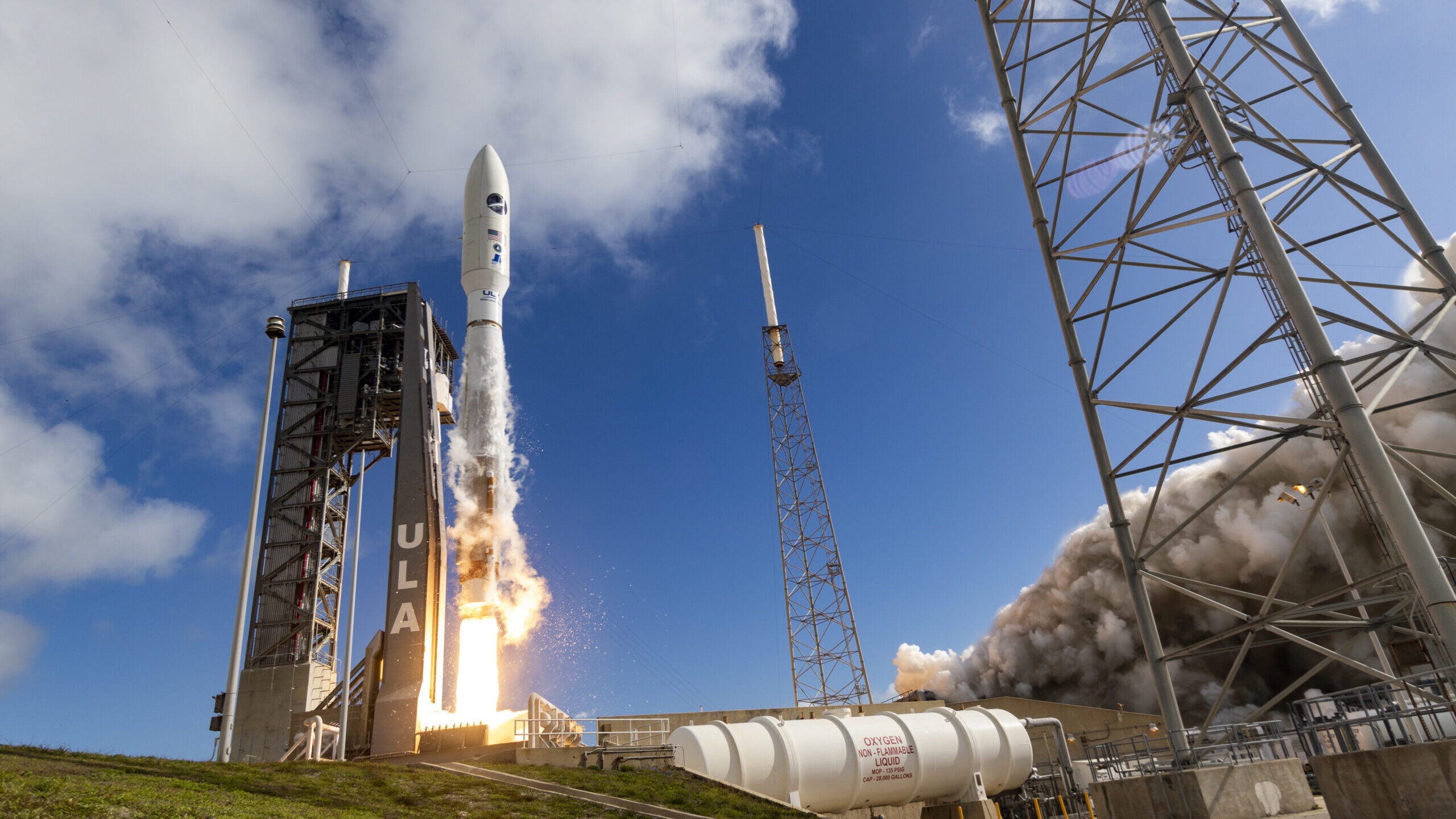THERESA HITCHENS

WASHINGTON — The Biden administration has decided not to release an unclassified version of its Strategic Space Review, despite the recent publication of other similar Pentagon reviews and a public push by senior space officials for more openness in space operations, Breaking Defense has learned.
In response to questions about the status of the report, a Defense Department spokesperson confirmed that the review had been signed out by Defense Secretary Lloyd Austin and Director of National Intelligence Avril Haines and transmitted to the White House. The document is meant to assess a range of space issues, including the balance of offensive and defense space capabilities available to Space Command. It was mandated by White House National Security Advisor Jake Sullivan earlier this year.
The decision to keep the space review under wraps is sprinkled with more than a little irony.
First, one of the issues on the table during the review itself was the long-running DoD effort to break down the wall of secrecy that long has surrounded national security space. The lack of an unclassified version also contrasts with the fact that the the Pentagon just Thursday released unclassified versions of the Nuclear Posture Review (NPR) and the Missile Defense Review (MDR) that both included a focus on increased Chinese and Russian threats.
Further, the move seems fly in the face of the recently unclassified version of the National Defense Strategy, which includes a new section that focuses on the use of information both as a deterrent and a means to avoid sparking conflict during a crises.
“Deterrence depends in part on competitors’ understanding of US intent and capabilities. The Department must seek to avoid unknowingly driving competition to aggression. To strengthen deterrence as well as manage escalation risks, the Department will advance its ability to operate in the information domain — for example, by working to ensure that messages are conveyed effectively,” the NDS states.
However, the DoD spokesperson explained that — unlike the NPR and the MDR — the Strategic Space Review was not required by law, and instead was an “internal, classified review” from the get go.
“Although the Space Strategic Review was conducted as an internal, classified review, there is a substantial amount of information released publicly about U.S. national security space activities,” the spokesperson added. “For example, DIA released an excellent unclassified compendium of space threats in April 2022. There are also a number of unclassified documents that outline U.S. national security space policy, to include the National Security Strategy, National Defense Strategy, U.S. Space Priorities Framework, National Space Policy, and Defense Space Strategy. We continue to assess our space-related classification policies.”
Government officials and outside experts who spoke to Breaking Defense were not in the least shocked at the Biden administration’s caution when it comes to talking about what the US can and can’t do in space.
For one thing, the DoD’s latest Space Policy, issued in September, deliberately avoids any reference at all to “offensive” space capabilities and/or operations, or “orbital warfare” — language that is found in DoD space doctrine and Space Force guidance papers crafted under previous administrations but still considered as official.
Perhaps the most similar review to the SSR in recent times, however, was the 2009 Space Posture Review exercise mandated by Congress that eventually was wrapped into the Obama administration’s 2011 National Security Space Strategy. Only a top-level summary of that strategy was released.
“I guess I’m not surprised that they aren’t releasing an unclassified version of the Strategic Space Review and yet are managing to do so for the MDR and the NPR. Old habits die hard and much of space is knee-jerk reflexively classified. It’s really hard to do strategic messaging when your policy documents are classified, so that seems shortsighted,” said Secure World Foundation’s Victoria Samson.
Her colleague Brian Weeden said the decision is understandable given the fact that the SSR was specifically aimed at trying to sort through what defensive and offensive capabilities the US needs to deter, and if necessary “defeat aggression” in space, in the words of the DoD Space Policy.
The De-Classification Dilemma
Top military brass for several years has been waging both an internal and external campaign to reduce the secrecy surrounding the assessment of space threats and US space capabilities, as well as the security constraints that make it extraordinarily hard to share technology and requirements with industry and friendly national governments.
But each of those arguments begs a different risk-benefit analysis, as well as a potentially different answer to the question of what, if anything, should be publicly revealed, argued a former senior DoD official with long experience in the debate.
“People talk about classification as if it’s all one thing, but it’s not all one thing. There’s many different things going on here,” said the former official, who spoke on the condition of anonymity. “You actually have to do the work, analyze the situation, and then decide on a case-by-case basis what has to be declassified.”
In particular, the ex-official said, when looking at US offensive and defensive capabilities, the pros and cons must be considered very carefully for each specific weapon system — because in some instances there will be deterrent value in revealing an ability to inflict harm on adversary systems, but in others such revelations may enable the enemy to “engineer around” that capability.
And up to now, the former official asserted, no one within DoD “has decided that that’s what they have to do, they just complain about classification.”
‘In Space, We Over-Classify Everything’

TJS-3 PRC counterspace system Credit: Xinhua
Military leaders in recent years have made progress on pushing more information into the public domain about threat analysis, particularly regarding growing Chinese and Russian space capabilities. And Russia’s invasion of Ukraine has both accelerated and solidified that trend, including easing the ability of DoD and the Intelligence Community to share information with allies, partner nations and industry partners.
“I’ve seen in the current crisis with Russia in Ukraine [that] the United States and its institutions have the ability to change and adapt rapidly when facing compelling need,” said Gen. DT Thompson, vice chief of the Space Force, in an Oct. 25 keynote speech at the Mitchell Institute’s Spacepower Security Forum.
However, he lamented the lack of progress in chopping through the layers of security-related red tape involved in sharing with industry technology — despite an ongoing effort by Deputy Secretary of Defense Kathleen Hicks on “streamlining” and “normalizing” the process.
“Security remains probably one of our biggest challenges. And one of the things that while we own the ability to change it, we just have some form of bureaucratic inertia that will not let us do,” Thompson said. “I will also say this is not the first time we’ve attempted to do this, and we have not really succeeded. … We’ll have to see if we can end up delivering. It just continues to be a challenge and a sclerotic part of our bureaucracy.”
Finally, despite all the high-powered military lobbying both in public and behind the scenes, the US military’s offensive space capabilities that can hold Chinese and Russian on-orbit assets at risk remain firmly locked behind the Green Door — with knowledge about a number of weapon systems restricted to Special Access Protected (SAPs) programs that limit access to a handful of senior government officials.
The extreme measures may work as a counter-intelligence tactic, but they also restrict the US government’s ability to deter both countries, and other potential adversaries, from deploying and using counterspace weapons against US and allied satellites, senior military leaders have argued.
“In space, we over-classify everything,” former Chairman of the Joint Chiefs Gen. John Hyten told the National Security Space Association on Jan. 22, 2021. “Deterrence does not happen in the classified world. Deterrence does not happen in the black; deterrence happens in the white.”
Chris Stone, a fellow at the Mitchell Institute, agreed.
“If we want deterrence to be effective, it takes three things: 1. Capabilities 2. Credible threats in the mind of the adversary and 3. The will to communicate the first two,” he told Breaking Defense. “You can’t deter an adversary with a secret capability if you don’t communicate what that is. Even the B-21 will be revealed in December… but not some of our vital space capabilities? This need to change.”
Even US commercial satellite systems are increasingly being threatened by China, and especially Russia — given the support provided by US remote sensing and communications firms to the Ukrainian government in its ongoing war to prevent a Russian occupation.
On Oct. 26, during the ongoing annual meeting of the UN First Committee on international security issues, a senior Russian official issued the most direct warning yet of Moscow’s potential for attacking US commercial satellites assisting Kyiv.
The “use by the United States and its allies” of civilian and commercial space systems “for military purposes” is not only “provocative” and “extremely dangerous trend,” but also “questionable” under the 1967 Outer Space Treaty, alleged Konstantin Vorontsov, deputy head of Moscow’s UN delegation.
“Apparently, these States do not realize that such actions in fact constitute indirect participation in military conflicts. Quasi-civilian infrastructure may become a legitimate target for retaliation,” he said.
National Security Council spokesman John Kirby pushed back against the Russian statement in an Oct. 27 briefing for reporters.
“Any attack on US infrastructure will be met with an appropriate response in an appropriate way,” he said, adding that Washington will “hold Russia accountable for any such attack, should it occur.”
White House Press Secretary Karine Jean-Pierre later elaborated: “We will pursue all means to explore, deter, and hold Russia accountable for any such attacks. Clearly, I’m not going to lay them down here in front of — in public. But we have made ourselves very clear.”
No comments:
Post a Comment